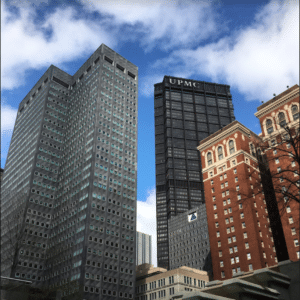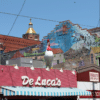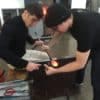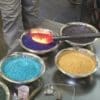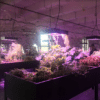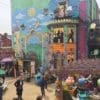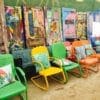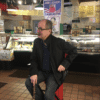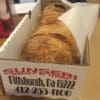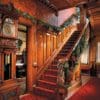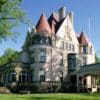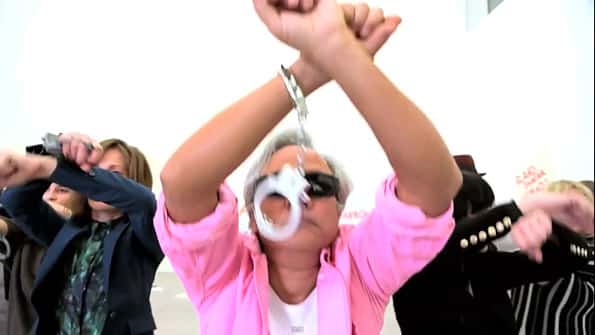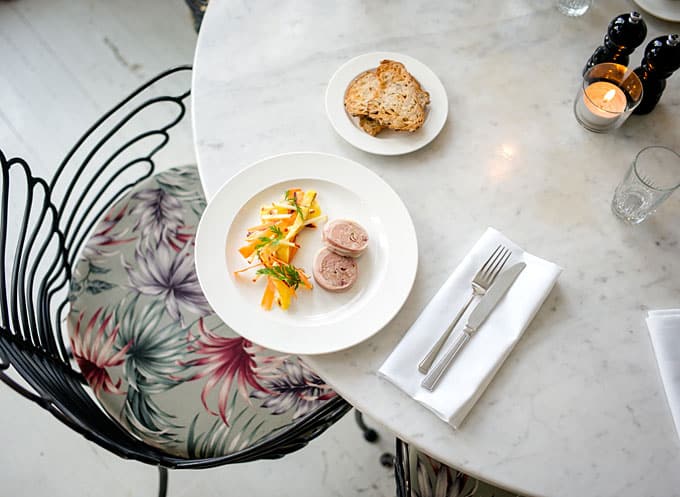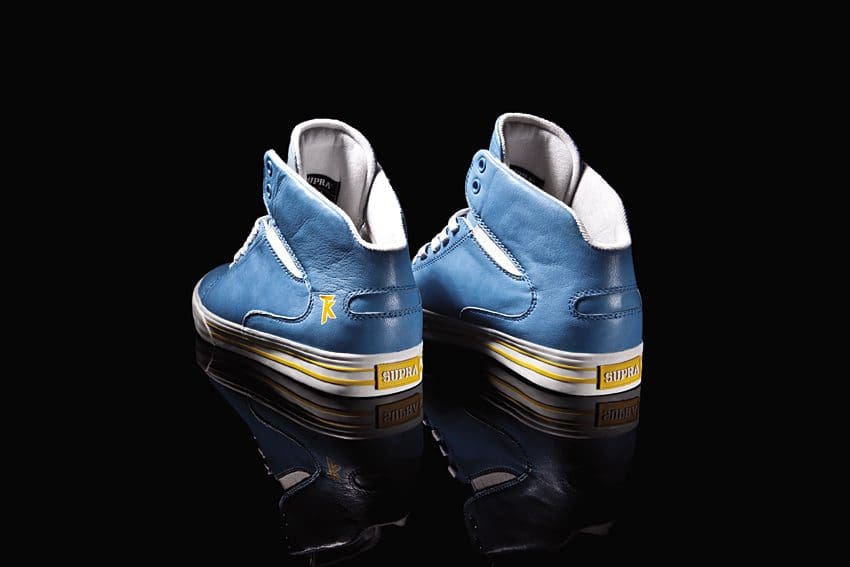Words: Chris Zacharia
‘One thing’s for sure – I’m going to be doing this ‘til the day I die’ says Chris, thrusting a orb of glass into a furnace.
‘In school, I was a troublemaker’ he explains as the glass heats. ‘My mom put me in every after school club she could to change me. And somehow glassblowing got the troublemaker out of me’
For a city of its size, Pittsburgh comes with a big reputation. Sitting in the west of Pennsylvania, Pittsburgh became famous as America’s Steel City, an manufacturing hotspot where the captains of industry forged the raw materials that made America great. I’m here to discover just how Pittsburgh was transformed from industrial hub to indie heaven.
‘Everything changed in the early ‘80s’ explains Jeff, who works at Pittsburgh Airport. ‘Man, we went through some tough times. But we came out of it stronger, and we’re really proud of what Pittsburgh has become’.
Pittsburgh Glass Center, where artists like Chris create ornate glass ornaments which defy belief, is an excellent example of what’s gone right for the Steel City. Housed in a former factory, Pittsburgh Glass Center successfully blends old and new, giving artists license to breathe life into old spaces.
Looking across the open-plan first floor warehouse, I can see half-a-dozen artists immersed in their glasswork, using all kinds of files and pliers to give their work shape and texture. Before it became famous for coke and steel, Pittsburgh was America’s foremost producer of glass. Although it has long since died out, the Pittsburgh Glass Center is a nod to the city’s history.
‘Artists come from all around to work here’ Chris explains, adjusting his beanie hat. ‘Over forty artists have relocated to Pittsburgh to work in this studio. Some of them stay on to become the next generation of instructors’
It’s easy to see why. Great facilities, plenty of space and a friendly atmosphere attract the artists; free entry plus the chance to blow your own glass brings in art-loving locals. ‘Make it Now’, a short class allowing anyone to get glassblowing, is available for $35.
Like many ex-industrial powerhouses, Pittsburgh has worked hard to change its image. Back in the 19th century, at the height of the steel boom, the air was so polluted that in photographs the daylight looks like dusk.
Even so, the city has always had natural beauty. Sitting at the confluence of two rivers, the Aligheny and the Monongahela, and beneath Mount Washington, Pittsburgh is picturesque. Much of the city’s old industrial architecture is being put to good use, stimulating creativity and growth.
Across the city, we encounter industrial spaces transformed into artistic hubs. Approaching from the city’s Mexican War Streets neighbourhood, the Mattress Factory looks innocuous. As the name suggests, the building was formerly a mattress factory. Now it’s a five-floor hub of site-specific artwork, created by in-residence artists.
On our way up, we pass a table surrounded by young artists, drawing and painting on paper.
‘Anyone can come in and be creative here’ explains Rachel, our guide. ‘It’s one of our ways of giving to the local community’
In the first room, there’s a hole in the floor: a long, narrow strip ending in a view of the neighbour’s garden. It’s uncovered and unprotected by a rope or a warning. This is actually a hollow aircraft wing which was been inserted into the building, offering a diagonal view of the outside.
The rest of the top floor is dominated by sixteen illuminated flowerbeds, glowing eerily in red and blue like alien landscapes.
Another two rooms are dedicated to Yayoi Kusama, whose international popularity has exploded thanks to her innovative – and Instagram-friendly – polka dot rooms.
We’re thrust into a Kusama room covered in mirrors. Suddenly an infinite number of Chris Zacharias are standing around looking confused. When we shut the door, the darkness enshrouds us, allowing the multicoloured polka dots on the floor and ceiling are cast upon us infinitely like a spell. We are embedded in the pattern.
In the next room, the opposite occurs: Kusama thrusts us out from the pattern, so that not only are we excluded from it, we’re positively clashing with it. Red polka dots sit on a bare, white background, the harsh brightness leaving us exposed. It’s far less comfortable, cleverly contrasting with the previous room.
In the basement, there’s film and sculpture, so that by the end of our tour we feel as though we’ve soaked up a great variety of artwork. But nothing can prepare us for Randyland, a five-minute walk from the Mattress Factory.
A multicoloured house stands beside a garden that is filled with bright Americana: dolls, dinosaurs, deckchairs, and plenty more. Had Walt Disney moved to inner city Pittsburgh and developed a fondness for marijuana, this is what his garden might’ve looked like. On this Thursday afternoon, the garden is home to packs of girls, roaming in twos and threes, trying to find the best vantage point for their selfie. Pretending that I’m above that sort of thing, I climb a ladder to a raised garden and plop myself in a yellow chair, watching the merry chaos below.
As unusual as Randyland is, it’s not all that dissimilar to our hotel. Kimpton hotels are known for their distinctive, quirky style, and downtown Pittsburgh’s Kimpton Monaco is both of those things and more. Combining an old-world glamour – checkerboard tiles, vaulted ceilings, fashion house furniture – with kitsch-y floral wallpaper and birdcage lampshades, the Kimpton Monaco makes for an inspirational and quirky base.
The next day, we head to the Strip District hugging the Aligheny river. Among the old depots and warehouses, a vibrant street food scene has developed, clustered around the delis and diners of Pittsburgh’s immigrant communities.
The best way to explore this historic market district with the ‘Burgh Bits and Bites tour. Founder Sylvia, a first-generation Pittsburgher with Swiss roots, is an excellent guide. She walks us through one street to another, high-fiving locals on the way and introducing us to the people who make Pittsburgh’s food scene tick.
There’s Jimmy Sunseri, the cigar-chewing Italian-American whose stories of 1950s Pittsburgh are like something straight out of Hollywood. ‘My dad brought me to work here at 13 years old’ Sunseri says, gesturing to his bustling deli and restaurant. ‘I’m 66 years old. Do the math – I’ve been here for 53 years.’
‘Working for my dad’ Jimmy begins expansively, ‘was like working for a terrorist. Everything I did was either wrong, or too slow.’ He launches into a convoluted, gripping backstory about his very first produce deliveries, hauled on crates across town as a teenager.
‘This bread’ Sunseri says, lifting a piece of the pepperoni-and-mozzarella stuffed pizza loaf, ‘was my dad’s invention. It was his idea, over fifty years ago. And we’re still selling them today. They’re our most popular dish’
You don’t have to travel far in the Strip District to uncover more of these culinary fables. There’s Labad, a Syrian food store with a hummus so rich and creamy it has us scraping the paper plate in desperation. Nearby are Wholley’s, a traditional fish wholesaler, and Mancini’s bakery, whose salesman hawks their sandwiches to passers-by (‘If you haven’t had one, you don’t know what’cher missin’; and if you have, then whaddaya waitin’ for, man!?’).
There’s a Greek store run by a family from Chios, a Polish shop with pierogis bursting with cheese, and a traditional biscotti shop, biscotti being a surprising Pittsburgh predeliction. The streets are full of bustle and chatter, a bright Saturday morning where everyone in Pittsburgh seems to be strolling these streets.
As enjoyable as the market is, there’s much more to Pittsburgh culinary culture. For dinner, we visit Smallman Galley, a unique concept that’s helping to put Pittsburgh’s gastronomic culture with the nation’s very best. A restaurant incubator, Smallman Galley offers budding chefs the chance to pitch their concepts to a panel of experts.
Three winners are rewarded with a space at Smallman Galley’s open-plan canteen, helping them to launch their restaurant and feed their first customers. Not only does Smallman Galley give chefs vital experience of running a kitchen, uniquely for a restaurant incubator it also aids them with valuable marketing and branding support, to help ensure that their first concept is a success.
One of the concepts, Ironmonger, serve what they call ‘Detroit-style’ pizza. The European within me can’t suppress a smirk. ‘Detroit-style’ pizza? What have the Italians does to deserve this mistreatment of their culinary heritage?
A few minutes later, and I’m fully converted. Miraculously avoiding doughyness, the Chicago-style thick base is daubed with a a fruity tomato puree and crisp toppings. Cleverly, it’s offered without too much cheese, the chefs sensing that too much would overload the square cake-like slices.
The edge of the pizza, usually the domain of disappointing crust, is a lattice of golden cheese, which snaps like honeycomb beneath your fingers. After three slices, I’m renouncing my initial snobbery. This isn’t pizza as you know it, but good luck resisting it.
Smallman Galley is another example of how Pittsburgh nurtures creativity. It’s working: in 2016, food guide Zagat named Pittsburgh as its number one food destination in the United States. One of Smallman Galley’s first cohort, a seafood restaurant named or, The Whale (a alternative title for Moby-Dick) is now housed in the impressive Distrikt Hotel. And, judging by their Eggs Chesapeake (a variation of Eggs Benedict with homemade crab cakes instead of ham), they’re doing really well.
But despite all the innovation, Pittsburgh hasn’t forgotten its roots. The days when the city was ruled by industrial titans like Andrew Carnegie and Henry Clay Frick are beautifully preserved in the Frick Museum. Out in the suburbs of Mount Washington, the Frick Museum occupies the house and garden owned by Henry Clay Frick himself.
As the pioneer of Pittsburgh’s coke revolution, Frick shaped the city like few others. By providing coke to the city’s burgeoning steelworks – owned by Andrew Carnegie, one of America’s all-time most successful businessmen – Frick became very wealthy.
Encompassing Frick’s house, a gallery and public gardens, the Frick transports you to the Gilded Age. The gallery, showcasing some wonderful Impressionist paintings in Frick’s collection, is spellbinding, but the house is the star attraction. You can only enter with a guide, and Charles Altman, our spectacled, wizened tutor, is an excellent companion.
‘As the house is undergoing its first major restoration, we’re going to enter through the back’ says Charles, as we approach. ‘Remember: look and admire all you want, but please don’t touch anything’
The door swings open, and we can see why. All four floors of this majestic house have been maintained in the style of the Gilded Age, as it looked between 1882 and 1905. The kitchen features tins brandishing long-gone brands; the breakfast table showcases Frick’s personal poker set and cigar tins; and original features like the electronic maid bells are still present and functional.
‘We’re one of the foremost historical reconstruction museums in the world’ Charles says proudly. ‘Original features. These doors – Bird’s Eye Maple. Very good wood. Very hard to carve. And this is a picture of Frick’s youngest daughter, Martha. She died when she was just six years old. Not only are there photos of her all around the house, Frick had his picture on his chequebook, so that every check he wrote had her face on it’.
As we explore each room, we uncover more and more of these period details. We see the original menu for meal honouring the visit of President Thomas Roosevelt, who enjoyed nine dishes before taking a nap in Frick’s own bedroom (‘Can you imagine that happening today?’ asks Charles). In the library, we catch a glimpse at Frick’s own books, including ‘Women, Etc’ and ‘The Five Talents of Women’ (‘Only five?’ quips Charles).
‘That’s why I love working here’ says Charles. ‘There’s always something to be discovered from the past.’
It’s a fitting monograph for Pittsburgh itself: a city where old treasures are transformed and given new life.
Tourist Board
For more information about travelling to Pittsburgh, go to VisitPITTSBURGH www.visitpittsburgh.com
Getting there
Flights to Pittsburgh from Gatwick start from £119.99 (one-way, WOW Basic package). All flights are via Reykjavik, and flight times are the following from Gatwick to Pittsburgh – 11h 5m from LGW-PIT, and 10h 40m from PIT-LGW (including stopover). Book now at WOW air www.wowair.co.uk
Hotel
To book your stay at the Kimpton Hotel Monaco Pittsburgh from $109 / £78 per night, visit www.monaco-pittsburgh.com


